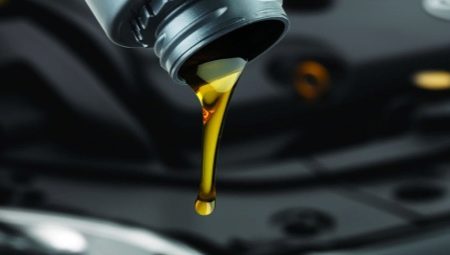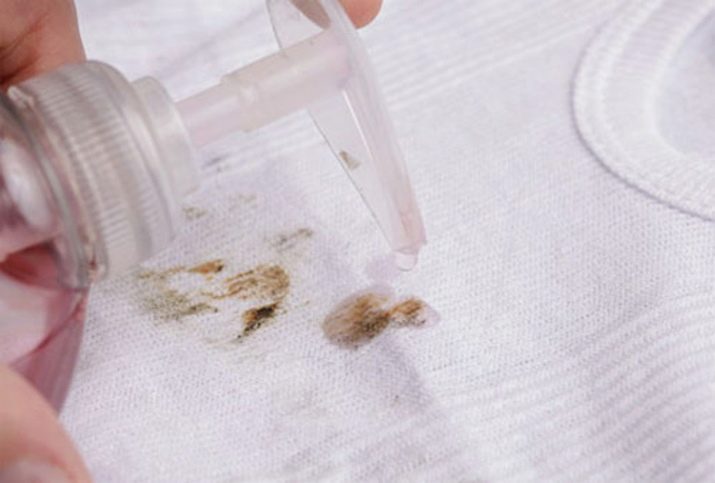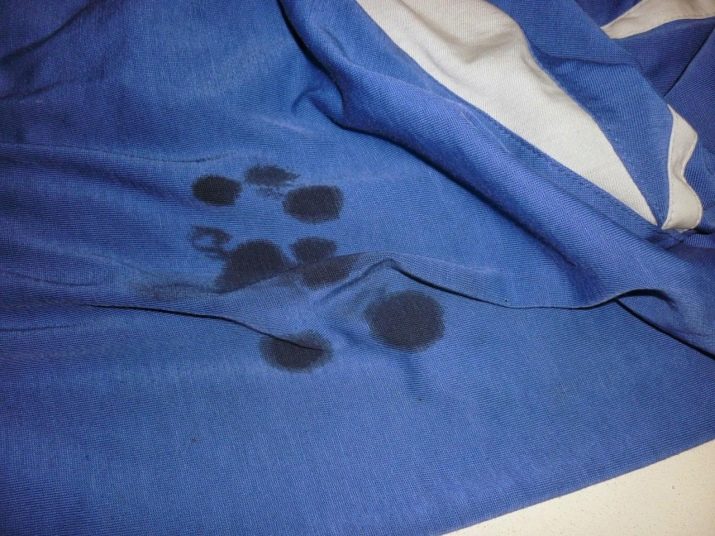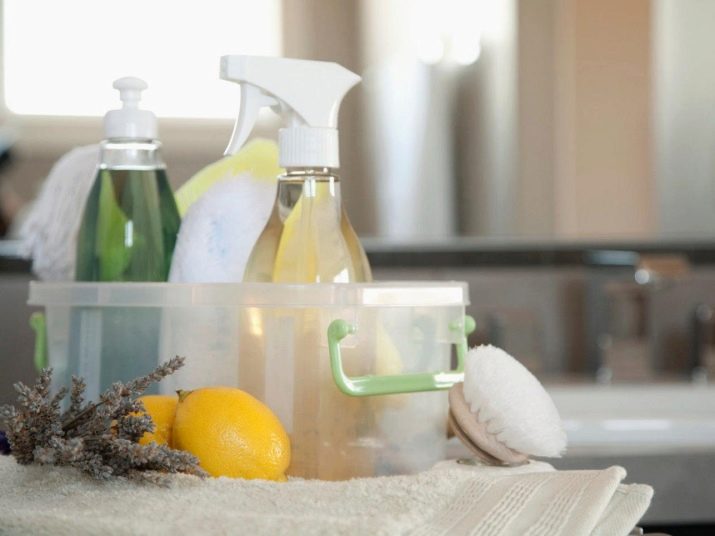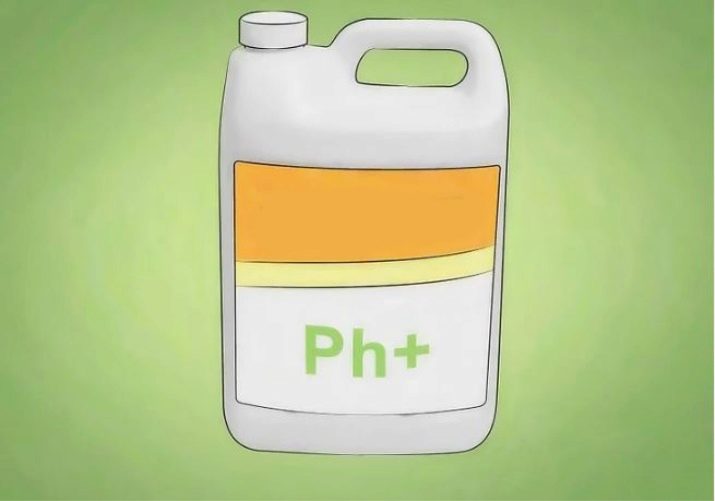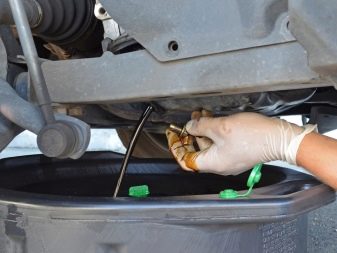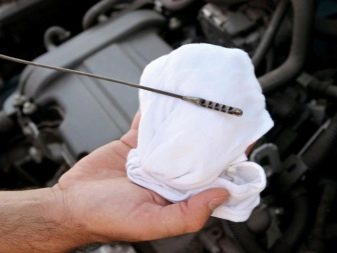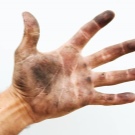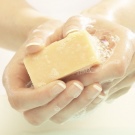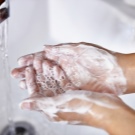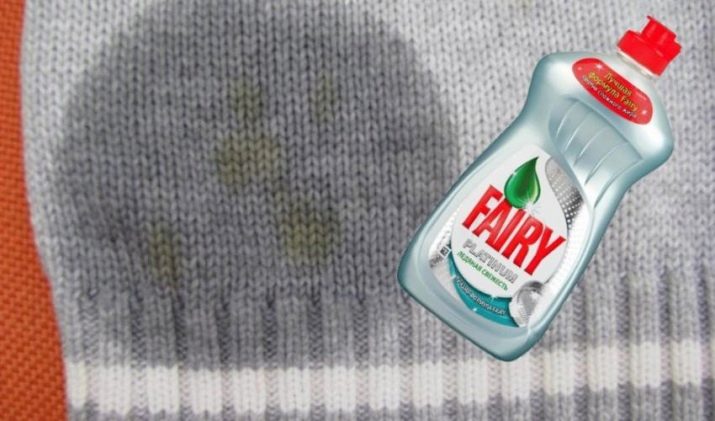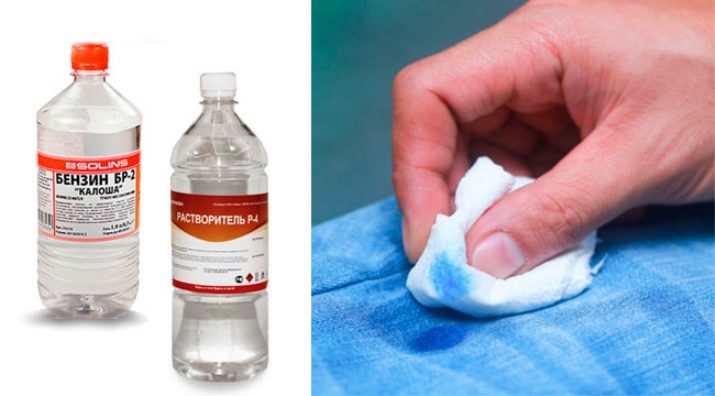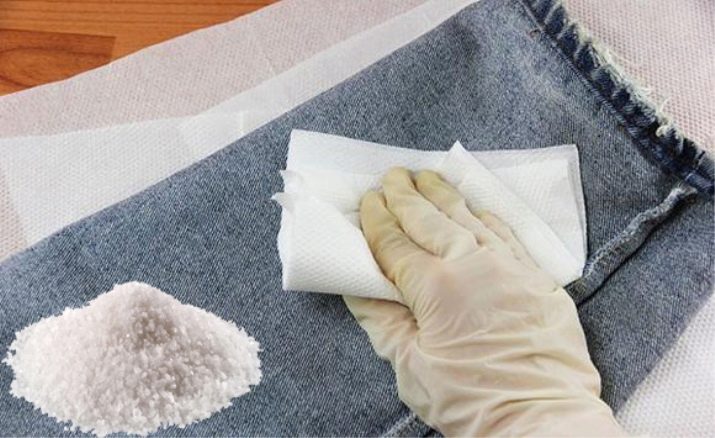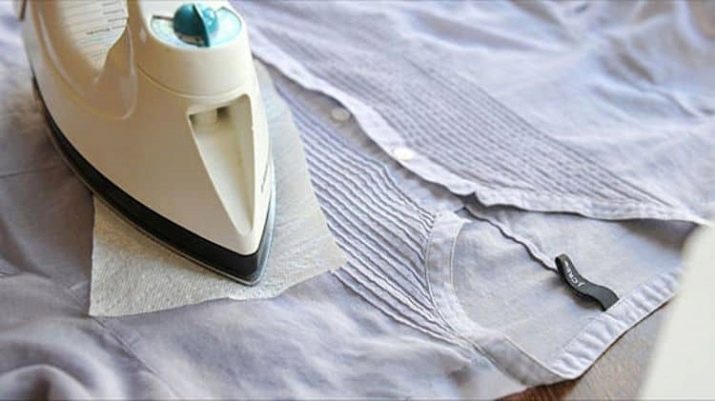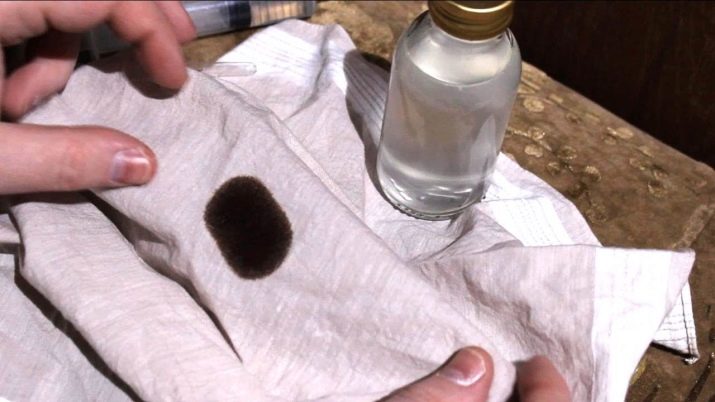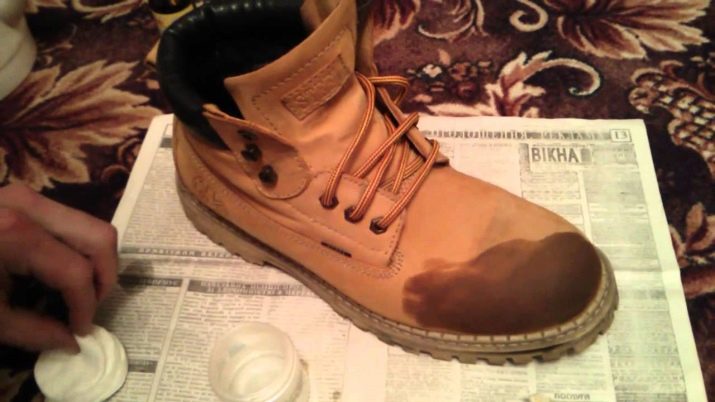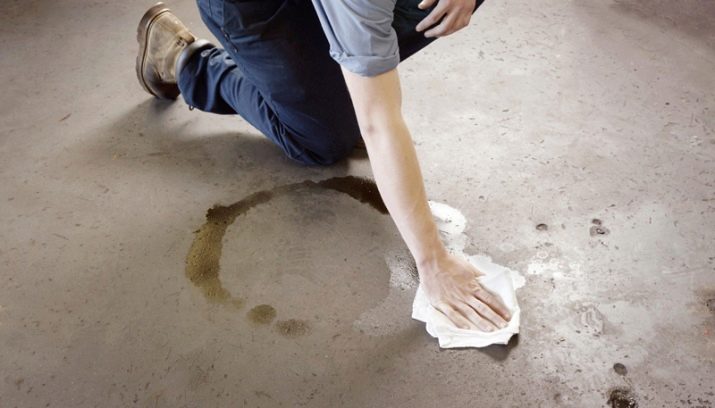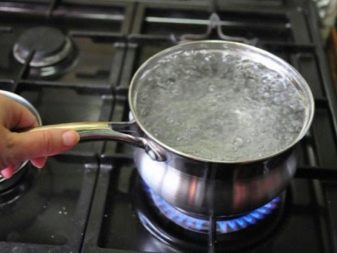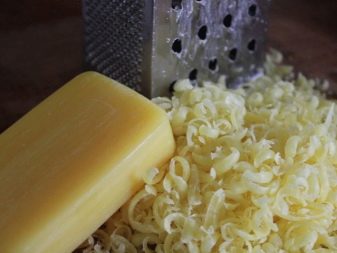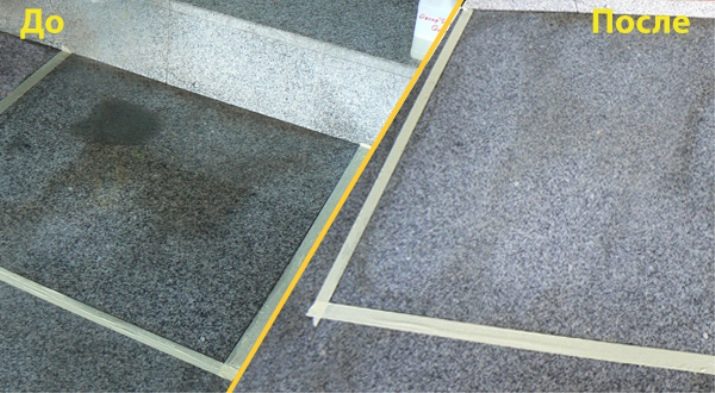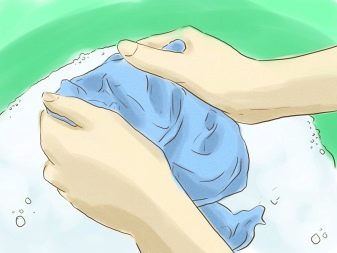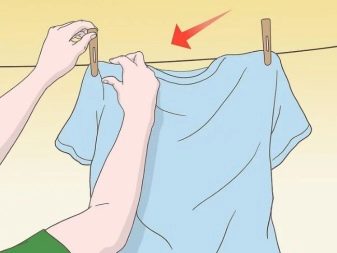To deal with various contaminations is both simple and difficult at the same time. Simply - when you know the right ways and approaches, and it is difficult - when you take ill-considered actions at your own peril and risk. There are some nuances in the cleaning of engine oil, depending on the type of the substance to be purified and the age of contamination.
Features of the composition of spots
It should be noted that used engine oil creates a different pollution than fresh (fat) oil. According to generally accepted industry classification, any oil made directly from crude oil, without further processing, as well as synthetic engine oils that are contaminated with anything, fall into the category of waste. But since we need to clean the stains, we will use a different division: we will consider fresh oils that are still in the original packaging, and used - previously used.
Manufacturers and sellers refer to natural machine oils as those obtained directly from the processing of fuel oil, with the removal of bitumen and asphalt and other heavy hydrocarbons from it. Synthetic - obtained, respectively, by chemical synthesis. The basis for the synthesis are:
- Dewaxed oil.
- Hydrotreated oil.
- Substances obtained by the method of hydrocracking.
- Polyalphaolefins.
- Esters, glycols and other substances that do not belong to any of the previous categories.
To speak in detail about additives does not make sense. But it is worth mentioning that their properties can make it difficult to clean up stains. For example, inhibiting the formation of foam, increasing viscosity and adhesion to the surface, reducing oxidation.
Cleaning compositions
Any oil stain is greasy to the touch, and the approach to it should be as if it were a normal contamination with fats. Should start with dishwashing detergent. Special reagents are able to remove stains on the floor and walls.
But in order to achieve a good result, it will be necessary to wash the used tool with a strong pressure of water.
If lube oil is required to be removed on a very large area, special ones are used. industrial reagents. You should not be afraid of them; substances with minimal or zero toxicity have long been developed. It is these drugs and should be used to clean the floor in the garage, walls; In addition, they also fight well with soot, soot, and dust.
Remove dirt
Often there is a need to remove engine oil from a car engine. But since this is a very complex device, with a specific geometry, it is necessary to abandon the mechanical cleaning. Special tools should be applied with a brush or disassemble the motor and place the problem parts in a container with a solvent. In order to permanently remove the remnants of the oil and cleansing composition, you need to wash the parts with water.
There is no need, given the time and the simplest skills, to pay for the services of car washes.
With hands
Wash car oil from the skin of hands is very difficult, and not in all cases, solid or liquid soap to cope with it. There is no need to stand in front of the sink for hours, fiercely rubbing the stain, there are much better solutions:
- One of them - sunflower oil, which is impregnated with cotton and thoroughly rub it with the skin. After removing the dirt, the hands are simply washed as usual.
- Washing powder does a good job; they take it in a small amount, after moisturizing the skin, and rub the problem area.Then wash off the dirt and the powder with warm water. But this method is worse than using vegetable oil - there is a risk of allergies, and you will definitely have to lubricate your hands on the same day with a moisturizer so that they do not dry out.
- Perfectly removes petrol stains from engine oil: in order not to pour too much of it, just wipe it off with a soft cloth. And then with the help of soap for a minute you can remove the rest of the fuel and its aroma.
- Car shampoo (half a cap is diluted in five liters of water) also does a good job with engine oil. Keep your hands in the solution for about five minutes, then wash it in hot water and soap.
But car shampoo should be used very carefully:
- It can provoke irritation.
- Excessive concentration of the substance can lead to allergies.
- It is unacceptable to use car shampoos to those who have at least one abrasion or cut.
With clothes
It is easy to remove oil stains from the fabric (workwear, car covers and seats, regular pants, shirts or mittens that have got oil). But the sooner you take action, the easier it will be to deal with the problem:
- Apply a kitchen detergent to the stain, wait a while, after which you can already wash the thing in the car, always at maximum speed, with a double rinse.
- Solvents should be used with extreme caution, having previously tested their effect on the inconspicuous outer part of matter. Very fresh stains, just applied, are removed even by hand: take warm water, laundry soap and wash it. Or prepare the same solution, wet it with a cloth, and wipe it with it (if it is not possible to put the jacket in an existing container).
- Stain removers should not be overestimated, they can provide significant assistance, but they do not always cope with old stains. The oil that gets on the jeans is easy to remove, if you sprinkle it abundantly with table salt (after five minutes, remove one layer, immediately apply a new one and repeat until the visible stain disappears). Now you will need to rinse clothes in a warm soapy solution.
Sometimes baking soda serves as a substitute for salt, it copes especially well with fresh dirt.
- When there are no tools at hand, there is still a solution - this is an ordinary iron. He copes quickly even with firmly stubborn oils: take wipes, apply them to both sides of the spot, iron. The oil will melt, and when flowing out of clothing, it is immediately absorbed into the napkins.
- Deducing stains from bolonevoy or other fabrics with kerosene, gasoline, diesel fuel (diesel) is also a proven method. They are good because you can remove dirt even directly in the garage, without looking for any additional reagents.
The fuel will almost certainly be there.
- Cotton can also be cleaned with vinegar. Gabardine is cleaned with special sprays and agents, and you can remove the oil from the sweater with acetone.
With shoes
It is important to note that suede shoes can be cleaned only after it has completely dried. It is unacceptable to dry it in direct sunlight or in heating devices. First of all, you should remove dust and dirt, only then you can take up the stain. As in the case of clothes, you need to check the effect of the selected drug in order not to spoil the look of your shoes. Read the instructions carefully and never rub the material too actively:
- Without any lotions and creams at home, you can remove the oil with suede shoes with brushes with rubber or rubber pile. If it is not at hand, help the office eraser.
- Another way is to use tooth powder, talcum powder or starch: they are heated in a griddle, sprinkled with a stain, covered with napkins, pressed with a load. After three hours, all that remains is to clean up the stain with a soft brush.
- Nubuck shoes are cleaned by sprinkling with fine salt, gently rub the stain and repeat the reception several times with a new batch.Apply talc or chalk is undesirable, they can leave white bloom.
- Leather shoes should be cleaned with wipes for wiping glasses or LCD monitors or vodka (alcohol). Never hold detergents on the shoes and even soap for too long, it can dry out the skin and even deform it.
- Sneakers cleaned similarly to textile materials.
From the floor
Concrete floors are usually cleaned easily, but engine oil stains can cause many problems. An excellent absorbent in this case is an ordinary filler for cats, it can absorb a lot of liquid. There is no difference between products of different brands; even the cheapest means can cope effectively. The filler is simply trampled into the concrete, then they wait 10-15 minutes, which is enough to absorb the stain.
However, keep in mind that this method will not help scrub the engine oil if it is bottled more than two weeks ago.
You can not clean the concrete with conventional cleaning agents, they can only smudge the stain over a larger area and make it difficult to remove. It makes sense to buy only special concentrates that are thoroughly diluted in water: the preparations themselves are too powerful. Linoleum is cleaned with soap, it is enough to use it at one time. If the lube is spilled on the wooden floor, first remove excess fatand then clean the stains with baking soda and other substances.
With metal
Metal surfaces often need to be washed from the oil, and this can be done without damaging them. A small detail is placed in unwanted pots or steel pots, poured with water from the top, poured planed laundry soap. The container is heated, boiled soiled part for five minutes, then it is removed and rinsed under running water.
Anyway, remove engine oil from metal. before painting it. Otherwise, the paintwork material will not be able to hold onto the surface. Mechanical cleaning can be performed with a grinding wheel or a stiff brush, then the product is rinsed and washed with warm water. Large containers are cleaned with a water jet from a hose. Given the resistance of the metal to cleaning reagents, you can safely apply white spirit, acetone.
It is easiest to clean the parts of a car engine at a car wash: time and effort will have to be spent much less.
From paving slabs
As soon as engine oil has got on paving slabs or other surface, it should be removed as soon as possible. After all, the problem itself will not be solved, on the contrary, great harm will be done to the ecology, and the stain is extremely unaesthetic and fire hazardous. To cope with it, the easiest way is to immediately wake up with sand, cement, even talcum powder, and after soaking, sweep it with a broom. If necessary, processing is repeated.
If somewhere the mechanisms are constantly working or they are repaired, the appearance of oil drips is inevitable. Washout with water, especially with the addition of detergents, works efficiently, but keep in mind that tile can become unusable due to constant dampness. When the surface of the stain is large or it is already old, you need to use special reagents, and not try to use improvised means or household chemicals.
Recommendations
Sometimes lube has to be cleaned from carpets. This is not such a frequent case, but rather difficult, because it is inconvenient, hard to erase carpets, it is not always easy to wash them thoroughly. It is necessary to use special gels and powders, strictly following the instructions, vacuum the dried surface. If there is no special tool or you want to save, there are other ways:
- Very fresh pollution is removed with paper napkinsby removing excess. The flooded place is also coated with a mixture of a tablespoon of table salt and a tablespoon of soda, leaving it for half an hour. After this, the reagent is cleaned with a vacuum cleaner soaked in soap and water with a sponge, wipe the stain area and remove excess liquid with a clean cloth.
- On the asphalt, as on the tile, the right thing to sprinkle immediately formed puddle sand or cement. From home remedies help in the removal of oil stains detergents: you can use any, as long as it was more. You will be able to enhance the effect by adding to one part of the powder and three parts of water a part of bleach. It is necessary to prepare the mixture only in metal containers, the plastic may be damaged!
As we have seen, there is no such fabric, footwear, clothing, floor, or coating from which it would be impossible to remove engine oil. Now you know exactly how to do it in a short time and without unnecessary risk. For more information on how to remove the stain from the engine oil, tell the following video.
